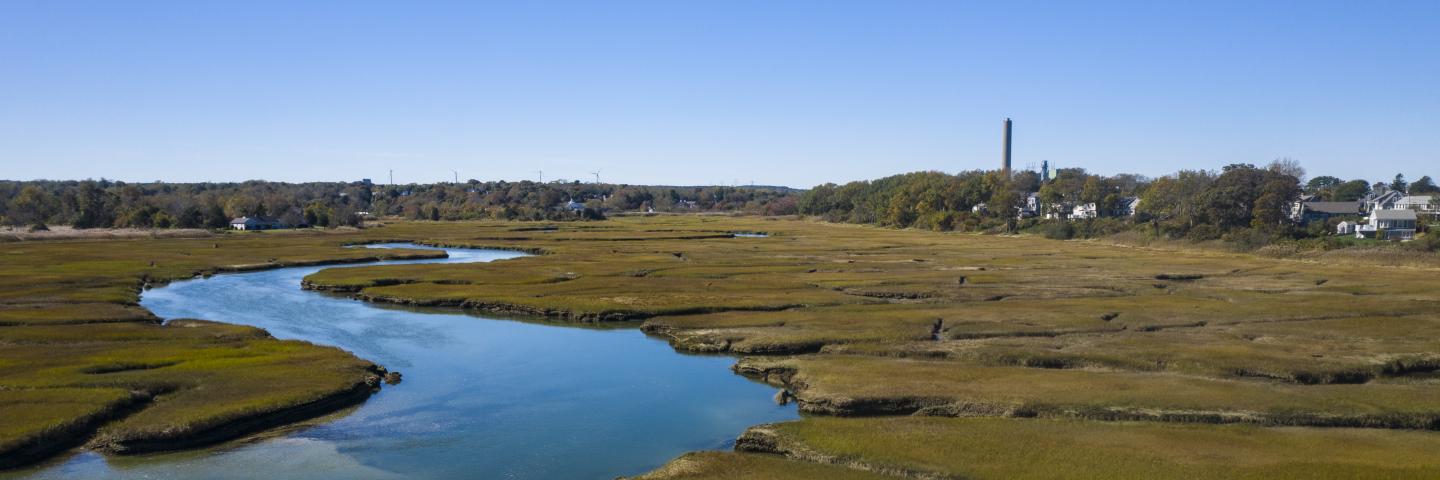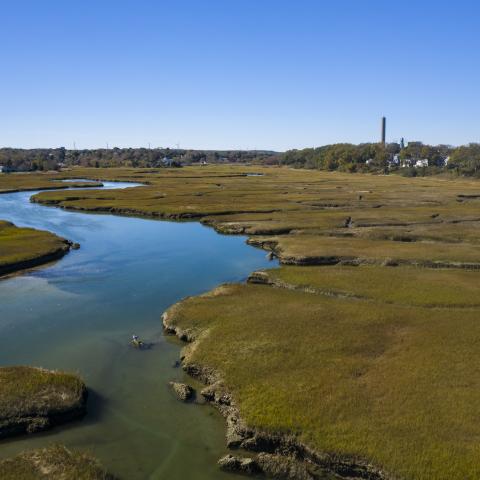
The Cape Cod Water Resources Restoration Project is a watershed-wide effort to restore fish passages, remediate stormwater runoff to protect shellfish beds and restore degraded salt marshes.
In 2010, the U.S. Department of Agriculture's Natural Resources Conservation Service (NRCS), in partnership with the Cape Cod Conservation District and the Barnstable County Commissioners, began an estimated $30 million project -- known as the Cape Cod Water Resources Restoration Project -- to restore 1,500 acres of degraded salt marsh, improve fish access to 4,200 acres of spawning habitat, and improve water quality for 7,300 acres of shellfish beds over 10 years.
Construction began in 2011 on 25 of the 76 proposed sites with $6.5 million in funding. Short-term economic benefits resulted, as well, from the creation of construction jobs. In 2017, USDA invested another $10 million for 16 additional project sites.
Project sponsors include the Barnstable County Commissioners, Coastal Resources Committee; Cape Cod Conservation District; Executive Office of Energy and Environmental Affairs; and all 15 Cape Cod towns. Additional federal, state and local agencies are cooperating.
Barnstable County, Massachusetts -- also known as Cape Cod -- is a coastal area where some of the sensitive ecosystems have been compromised by development. Water quality is a major concern, particularly as it affects salt marshes, shellfish beds and herring runs.
Stormwater runoff is a significant source of pollution in coastal areas. Some shellfish beds on the Cape are often closed for extensive periods during the year because of poor water quality due to stormwater runoff. Maintaining good water quality through improved stormwater management near the many approved, open shellfish beds found throughout Cape is a priority.
Salt marsh degradation and barriers that interfere with the migration of fish are also significant concerns which the Cape Cod Resources Restoration Project seeks to address.
Federal, state and local agencies have partnered to identify these problems and formulate solutions. The costs and benefits of various alternatives have been evaluated and sponsors' decisions are contained in the watershed plan. The plan identified 76 sites throughout Cape Cod for possible restoration including:
- 26 stormwater discharge sites
- 26 tidally-restricted salt marshes
- 24 obstructed fish passages.
The watershed plan describes the work to be done, the responsibilities of each agency, financing arrangements and maintenance provisions. The estimated total cost of the project is nearly $30 million, of which $23 million would be provided by the federal government and the remainder through non-federal sources.
The project represents a partnership of federal, state and local agencies, as well as all 15 Barnstable County towns. Project sponsors are the Barnstable County Commissioners, Cape Cod Conservation District, Executive Office of Energy and Environmental Affairs, all 15 Cape Cod towns, and the USDA Natural Resources Conservation Service.
Cooperating agencies include: Mashpee Wampanoag Tribe, Massachusetts Department of Environmental Protection, Massachusetts Department of Fish and Game, Massachusetts Division of Coastal Zone Management, Massachusetts Division of Marine Fisheries, Massachusetts Highway Department, National Oceanic and Atmospheric Administration, National Park Service, U.S. Army Corps of Engineers, U.S. Fish and Wildlife Service and the town boards of health, natural resource departments, conservation commissions, shellfish wardens and harbormasters.



